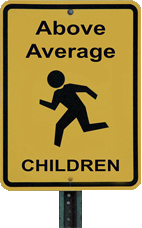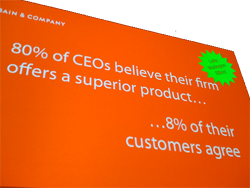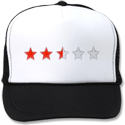How good are you at your profession? Do you think you are the best person on your team? Top 10%? Above average?
 If your team were large enough I believe that most of you could find someone else that was at least as good as you. I would also put money on it that the majority of you believe you are in the top 10% of that same group. From a leadership perspective this is important to understand.
If your team were large enough I believe that most of you could find someone else that was at least as good as you. I would also put money on it that the majority of you believe you are in the top 10% of that same group. From a leadership perspective this is important to understand.
A few interesting tidbits:
- In 1981 University of Sweden researcher Ola Svenson did a study of US drivers to find out how they viewed their driving skills. A surprising 93% of the participants thought they were “above average” drivers.
- In a Wall Street Journal poll earlier this year, 79% of those polled disapproved of the job Congress was doing and thought we should “throw the bums out.” Only 16% thought their congressman should be one of them.
- In the town of Lake Wobegon all the children are above average.
Ok the last one is only a radio show and doesn’t count, but it does illustrate a very pervasive human trait that psychologists call the illusory superiority bias. Most of the rest of us call it the Lake Wobegon Effect.
One thing you can conclude from this cognitive bias is that how we view our team as a whole does not likely fit the view each team member has of themselves. It is pretty simple to see how this would affect employee performance reviews, but if not careful it can also turn a simple employee recognition system into a nightmare – and it did.
 Like many companies in corporate America a former company of mine had developed a President’s Club – a special trip for those that had outstanding years. In the sales world this typically means blowing out your quota for the year. In engineering we didn’t have a solid metric to use so it was at the discretion of the leadership team. Key point – one had a published sales target, the other was an opinion.
Like many companies in corporate America a former company of mine had developed a President’s Club – a special trip for those that had outstanding years. In the sales world this typically means blowing out your quota for the year. In engineering we didn’t have a solid metric to use so it was at the discretion of the leadership team. Key point – one had a published sales target, the other was an opinion.
The first year we only chose 1% of the engineering organization. When the names were announced there weren’t any great surprises and most everyone agreed these guys rocked it. However, there was much noise raised that sales were sending far more than engineering and that we should include more engineers. So we opened it up to the top 10%. Everyone applauded the decision.
That is until the names were announced.
You should have seen the dejected look on everyones faces when they discovered they were not on that list. What was designed to be an employee reward would soon become the most ridiculed process within the company. People were heard rationalizing “who wants to be on a cruise ship with a bunch of sales weenies anyway?” President’s Club soon became a yearly joke.
If we would have understood the Lake Wobegon Effect beforehand we would have known that this was coming. Almost everyone can find one person, maybe two that are better than they are or had a better year. The minute you open that up to a number like 10% things get quite messy.
This is true not only in the big recognition programs but even in the simple weekly team meetings and daily emails as well. When you stand in front of the team meeting and recognize that one special individual you are likely to get a nice round of applause. Do the same for a larger group of people and listen to the muted golf claps. Don’t believe me – watch their faces.
 I am not at all advocating the wishy washy local Parks and Rec rules where everyone gets a trophy or there are no losers. I hate soccer games where there is no score. I am instead suggesting that as you consider designing recognition systems that start to include a larger audience you understand the knock on effect it will have on others and determine if your overall goal is achieved. Don’t stop recognizing, just consider alternative methods.
I am not at all advocating the wishy washy local Parks and Rec rules where everyone gets a trophy or there are no losers. I hate soccer games where there is no score. I am instead suggesting that as you consider designing recognition systems that start to include a larger audience you understand the knock on effect it will have on others and determine if your overall goal is achieved. Don’t stop recognizing, just consider alternative methods.
Here are three suggestions that may help.
- Publish a fixed target for achieving the reward (like sales targets of achieving 120% of quota) and be prepared you may have more reach the goal than you had budgeted.
- If the decision needs to be subjective make clear the criteria and degree used to judge the winners. Also consider using an outside panel that can more objectively judge the accomplishments.
- When the reward gets close to 10% of the population and the decision is subjective, consider making the recognition private to the selected group or individuals.
Now I need to get out to do some Christmas shopping among those 93% above average drivers. Hmmm, maybe not.
Today’s Question
Have you ever had a recognition system backfire on you?






